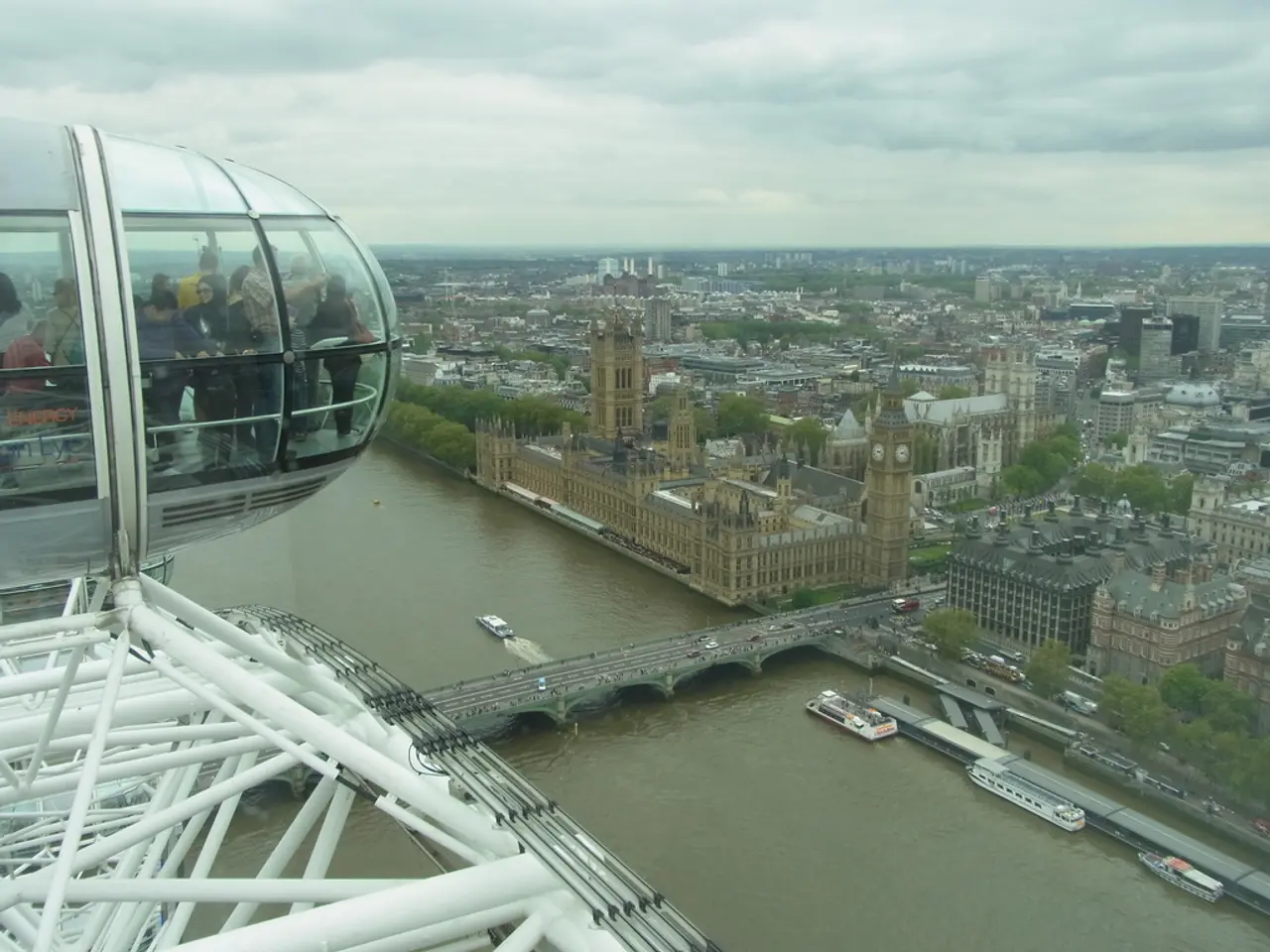Chaotic scenes at Heathrow airport as travelers ditch their vehicles and make their way on foot to overcrowded terminals.
Heathrow Airport Faces Another Disruption: Technical Issue Causes Road Tunnel Closure
Heathrow Airport, one of the busiest airports in the world, faced another disruption on August 5, 2025, due to a technical issue that led to an unscheduled closure of a road tunnel connecting Terminals 2 and 3. The closure resulted in significant traffic congestion, causing delays for travellers and gridlock on nearby roads, including motorways.
Passengers shared images of lengthy queues on social media, with some reporting "utter chaos" and a lack of communication. The airport advised passengers to allow extra time for their journey and apologized for any inconvenience caused.
This latest disruption comes after a series of incidents that have tested Heathrow's emergency response system. In March 2025, the airport was closed for almost 24 hours due to a fire in a nearby electricity substation, causing a massive power cut and costing the airport millions of pounds.
During critical incidents, Heathrow's emergency systems are designed to activate promptly, ensuring the safety of passengers and maintaining operational continuity. The airport's crisis management functions operate independently of individual leadership presence, coordinating responses to emergencies that affect operations and passenger flow.
In the case of the March 2025 fire, Heathrow's emergency systems were activated immediately, despite the CEO missing calls due to his phone being on silent. The organization’s crisis protocols included halting operations rapidly to ensure safety, managing stranded passengers, and coordinating with airlines and emergency services.
Heathrow's emergency situation management relies on a combination of automated alerts, predefined crisis procedures, coordinated emergency services responses, area evacuations when necessary, and flexibility to manage ground traffic disruptions. However, external system faults, such as the recent road tunnel closure, can impact surface transportation connections, leading to significant delays.
In response to these challenges, Indian-born businessman Surinder Arora has proposed a plan to develop a third runway and new terminals at Heathrow, potentially competing with Heathrow's own scheme. Arora's plan, which costs £25 billion, includes a runway that passes under the M25 motorway, unlike Heathrow's current plan.
Despite the recent disruptions, Heathrow Airport continues to serve millions of passengers each year. Some critics, like Malcolm Cowling, have compared it to the "Mickey Mouse Airport of the Year Award" and questioned why anyone would fly from there unless they had to. However, others, like Passenger Sheila Carney Bowen, have praised the airport's staff for their efforts to manage the chaotic situations that occasionally arise.
[1] Heathrow Airport's Emergency Response System [2] Emergency Landings at Heathrow Airport [3] Rapid Evacuations at Heathrow Airport [4] Operational Safety Instructions for Airside Tunnels [5] Impact of External System Faults on Heathrow's Surface Transportation Connections
- In light of the recent road tunnel closure at Heathrow Airport, there could be a need for a review of the airport's features section, addressing the impact of external system faults on Heathrow's surface transportation connections.
- Despite the chaos and disruptions at Heathrow Airport, fans of sports and travel might still find it as an essential stop on their itineraries, making it a significant component of travel and lifestyle articles.
- Business analysts might take interest in the current situation at Heathrow Airport and the proposed plans by Indian-born businessman Surinder Arora, comparing the costs and potential benefits for both parties in the business and lifestyle sections of news outlets.




